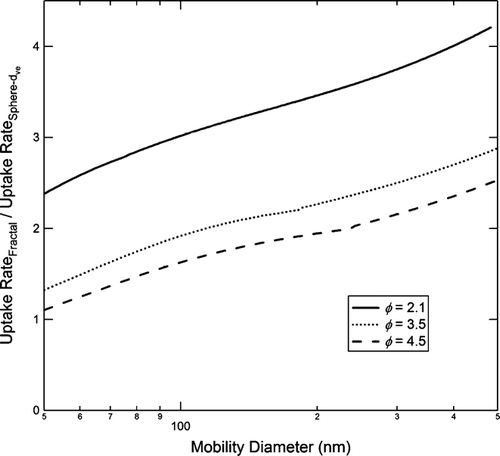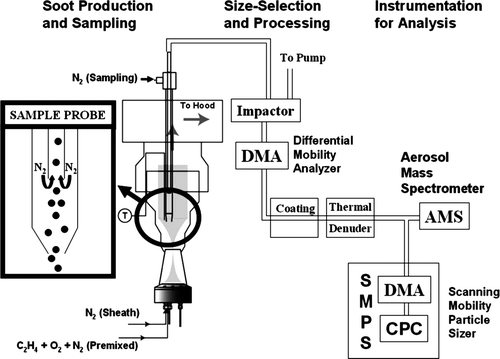Figures & data
TABLE 1 Spherule diameter as a function of φ for denuded particles
FIG. 2 Vacuum aerodynamic diameter as a function of mobility diameter for particles produced at φ = 2.1, 3.5, and 4.5. Lines are provided for visual guidance.
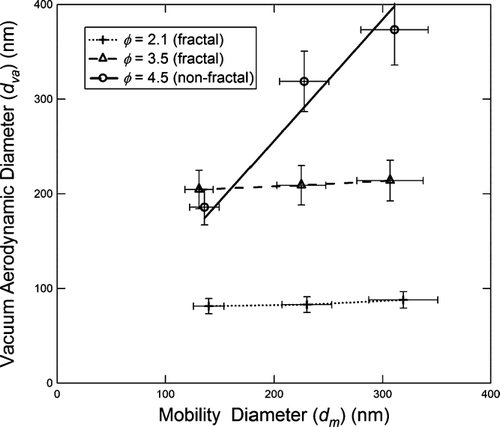
FIG. 3 Sample vacuum aerodynamic (dashed line, left axis) and mobility diameter (solid line, right axis) size distributions. Particles were produced at φ = 2.1 and selected at d m = 225 nm. Singly and doubly charged particles are labeled in the mobility distribution.
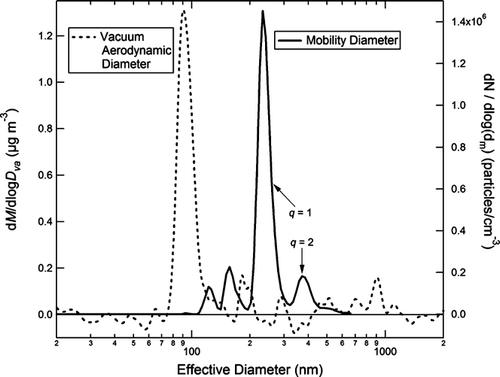
FIG. 4 Dynamic shape factor as a function of volume equivalent diameter for uncoated soot particles of d m = 135 nm, 225 nm, and 310 nm. Fuel equivalence ratios are shown in the legend. Calculated relationships, shown as lines, are obtained from Equation (Equation3) as described in the text.
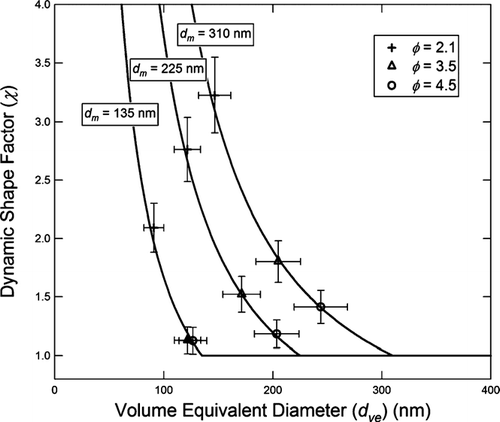
TABLE 3 Surface area of denuded fractal particles (A fractal ) of given d m relative to a sphere of the same volume (diameter = d ve ) (A sphere−d ve = π d ve 2). Values are given for three fuel equivalence ratios (φ) and three mobility diameters.
FIG. 5 Particle dynamic shape factor (χ) as a function of amount of deposited oleic acid (Δ r ve ) for particles with uncoated d m = 225 nm. Fuel equivalence ratios (φ) are as shown in the figure. Calculated relationships, shown as lines, are obtained from Equation (Equation3) as described in the text.
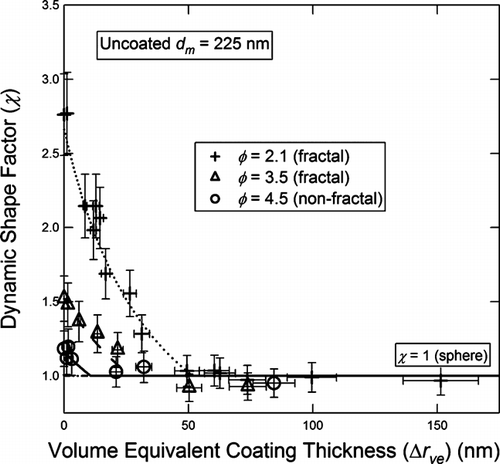
FIG. 6 Particle mobility diameter (d m ) as a function of amount of deposited oleic acid (Δ r ve ) for particles with uncoated d m = 225 nm. Fuel equivalence ratios (φ) are as shown in the figure. Calculated relationships, shown as lines, are obtained from Equation (Equation3) as described in the text.
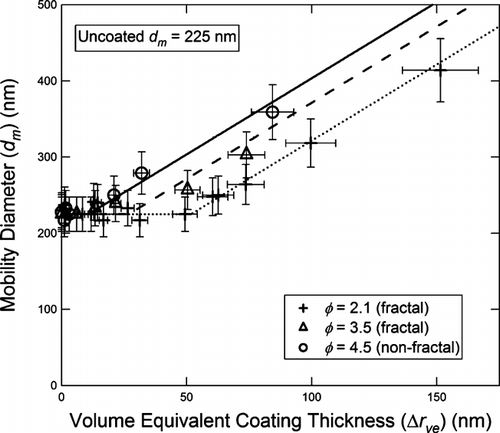
FIG. 7 Particle vacuum aerodynamic diameter (d va ) as a function of amount of deposited oleic acid (Δ r ve ) for particles with uncoated d m = 225 nm. Fuel equivalence ratios (φ) are as shown in the figure. Calculated relationships, shown as lines, are obtained from Equation (Equation1) as described in the text.
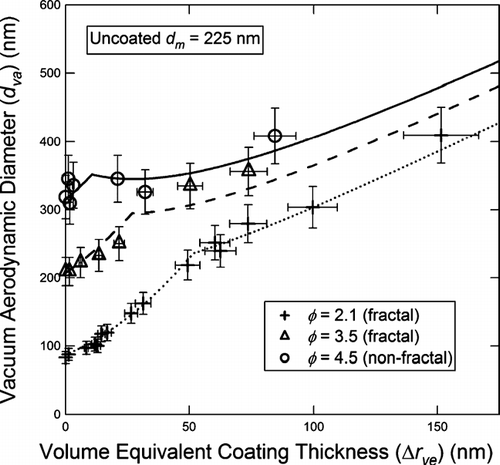
FIG. 8 Particle dynamic shape factor (χ) as a function of amount of deposited anthracene (Δ r ve ) for particles with uncoated d m = 225 nm. Fuel equivalence ratios (φ) are as shown in the figure. Calculated relationships, shown as lines, are obtained from Equation (Equation3) as described in the text.

FIG. 9 Particle mobility diameter (d m ) as a function of amount of deposited anthracene (Δ r ve ) for particles with uncoated d m = 225 nm. Fuel equivalence ratios (φ) are as shown in the figure. Calculated relationships, shown as lines, are obtained from Equation (Equation3) as described in the text.
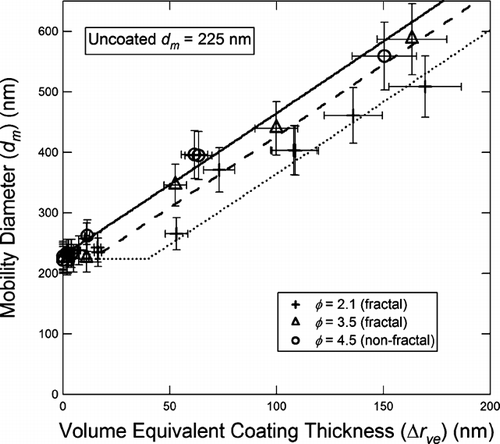
FIG. 10 Particle vacuum aerodynamic diameter (d va ) as a function of amount of deposited anthracene (Δ r ve ) for particles with uncoated d m = 225 nm. Fuel equivalence ratios (φ) are as shown in the figure. Calculated relationships, shown as lines, are obtained from Equation (Equation3) as described in the text.
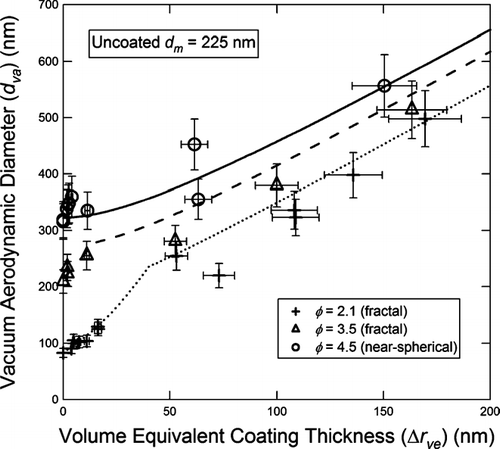
FIG. 11 Relationship between the dynamic shape factor and particle volume for anthracene and oleic acid-coated soot particles. Mobility diameter for uncoated soot is 225 nm. For the coated particles, no distinction is made for particles produced at different φ. Solid lines represent model calculations (see text).
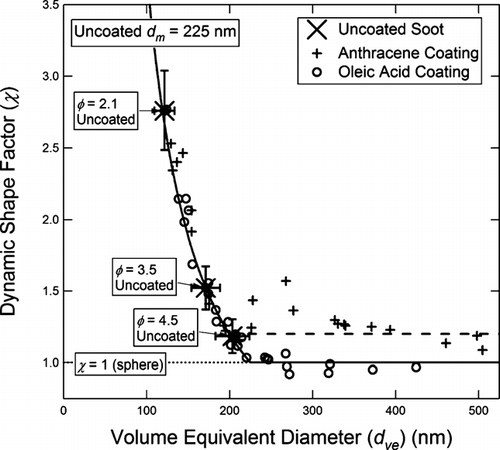
FIG. 12 Dynamic shape factor as a function of volume equivalent diameter for uncoated soot particles before and after denuding. Closed symbols represent particles before denuding and open symbols represent denuded particles (T denuder = 200°C). Dashed lines connect denuded particles to the source particle before denuding. Calculated relationships, shown as solid lines, are obtained from Equation (Equation3) as described in the text.
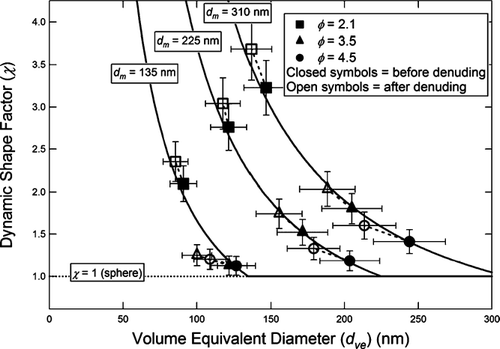
TABLE 2 Surface area of denuded fractal particles (A fractal ) of given d m relative to surface area of sphere with diameter = d m (A sphere − d m = π d m 2). Values are given for three fuel equivalence ratios (φ) and three mobility diameters.
FIG. 13 Dynamic shape factor as a function of volume equivalent diameter for uncoated and oleic acid- and anthracene-coated soot particles passed through a thermal denuder at 200°C. All particles were produced at φ = 2.1 selected at d m = 225 nm. The solid fit line is obtained from Equation (Equation3) as described in the text.
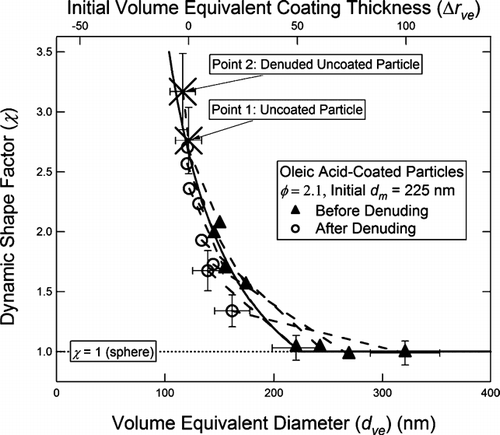
FIG. 14 Plot of τ for a denuded fractal soot particle relative to τ for a sphere with the same d m as the soot particle as a function of particle mobility diameter. The surface area of the fractal particle is calculated via Equation (Equation14) using the measured values for d pp in . The surface area of the sphere is π d m 2. Fuel equivalence ratios are as shown in the figure.
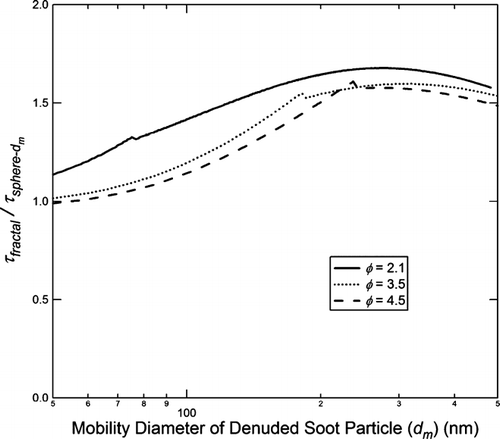
FIG. 15 Plot of τ for a denuded fractal soot particle relative to τ for a sphere with the same d ve as the soot particle as a function of particle mobility diameter (d m ). The surface area of the fractal particle is calculated via Equation (Equation14) using the measured values for d pp in . The surface area of the sphere is π d ve 2. Fuel equivalence ratios are as shown in the figure.
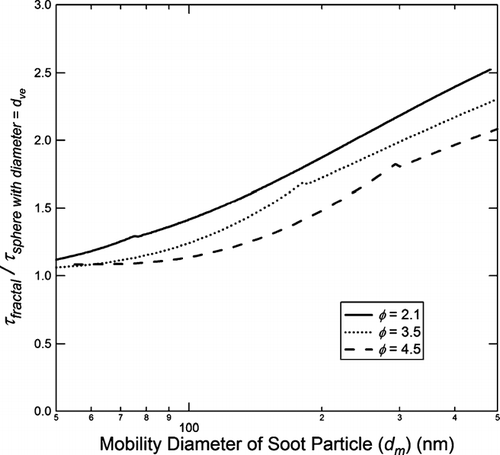
FIG. 16 Plot of the uptake rate for a denuded fractal soot particle relative the uptake rate for a sphere with the same d m as the soot particle as a function of particle mobility diameter. The surface area of the fractal particle is calculated via Equation (Equation14) using the measured values for d pp in . The surface area of the sphere is π d m 2. Fuel equivalence ratios are as shown in the figure.
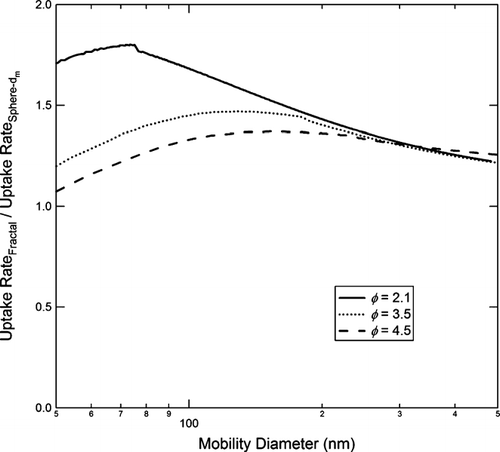
FIG. 17 Plot of the uptake rate for a denuded fractal soot particle relative to the uptake rate for a sphere with the same d ve as the soot particle as a function of particle mobility diameter (d m ). The surface area of the fractal particle is calculated via Equation (Equation14) using the measured values for d pp in . The surface area of the sphere is π d ve 2. Fuel equivalence ratios are as shown in the figure.
